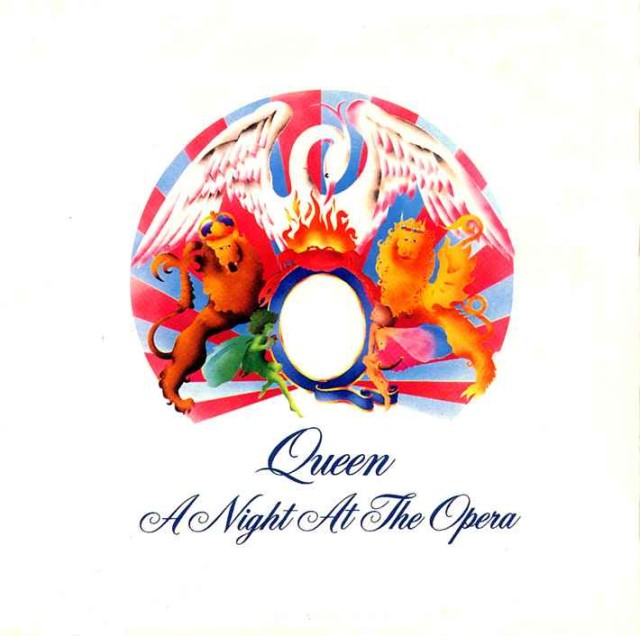
A Night at the Opera (1975)

1. Death on Two Legs
2. Lazing on a Sunday Afternoon
3. I'm in Love With My Car
4. You're My Best Friend
5. '39
6. Sweet Lady
7. Seaside Rendezvous
8. The Prophet's Song
9. Love Of My Life
10.Good Company
11.Bohemian Rhapsody
12.God Save the Queen
By 1975, Queen had already carved out a name for themselves as an ambitious and somewhat eccentric rock outfit, but with the release of A Night at the Opera, they did something altogether different: they made a masterpiece. Often cited not only as Queen’s greatest album but as one of the finest rock albums ever made, this was the moment the band stopped flirting with greatness and fully embraced it.
Borrowing its title from a Marx Brothers film, the album gleefully mirrors the chaos, wit, and theatricality of its namesake. This time around, Queen didn’t just hint at operatic excess — they dove in headfirst. The concept of blending opera and rock music seemed ludicrous to most, and to be fair, it probably still is. But somehow, they made it work. Not only that — they made it iconic.
At the center of it all, of course, is Bohemian Rhapsody. If you were around when it first hit the airwaves, you might remember the general reaction being somewhere between awe and confusion. A six-minute rock song with no chorus, an a cappella intro, a pseudo-operatic middle, and a blistering guitar solo? And this was a single? Somehow, yes — and it worked. The song’s revival in Wayne’s World years later only underscored its enduring appeal. But despite its prominence, Bohemian Rhapsody is something of an outlier on the album.
The rest of the record is, for the most part, a bit more conventional — or at least as conventional as Queen ever got. What separates A Night at the Opera from earlier albums isn’t its flamboyance, but the sheer quality of the songs. Every track feels like a deliberate step forward. After the venomous opener Death on Two Legs, we’re thrown into the Tin Pan Alley pastiche of Lazing on a Sunday Afternoon, followed by Roger Taylor’s car-as-lover anthem I’m in Love With My Car. Ridiculous? Absolutely. But it’s arguably Taylor’s best moment with the band.
John Deacon offers the gently charming You’re My Best Friend, a straight-ahead pop gem that stands in sharp contrast to the album’s more theatrical moments. Brian May delivers ’39, a deceptively cheerful acoustic shuffle that — depending on who you ask — is either about time dilation, space travel, or both. The lyrics may be questionable, but the melody is undeniably infectious.
Elsewhere, the band continues to shift gears without ever losing cohesion. The Prophet’s Song is the album’s other epic — clocking in at over eight minutes, it’s a dense, multi-part suite that gives Mercury and May ample room to stretch out both vocally and instrumentally. It’s perhaps the only song here that genuinely attempts to rival Bohemian Rhapsody in scale, and while it doesn’t have quite the same cultural footprint, it’s every bit as ambitious.
Even the oddities work. Sweet Lady and Seaside Rendezvous might be polar opposites in tone, but they share the same fearless spirit that defines the entire album. And when it’s all said and done, the record closes with a rendition of God Save the Queen — a gesture that in anyone else’s hands might have felt insincere or absurd. Here, it’s the only way the album could have ended.
A Night at the Opera was the album that proved rock music could be intelligent, funny, theatrical, and still utterly powerful. It didn’t just define Queen — it redefined what a rock band could be.
Go back to the main page
Go To Next Review